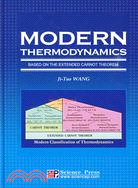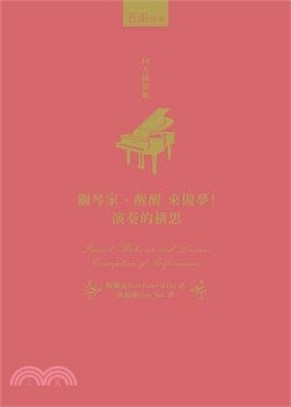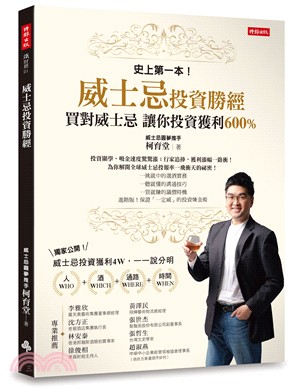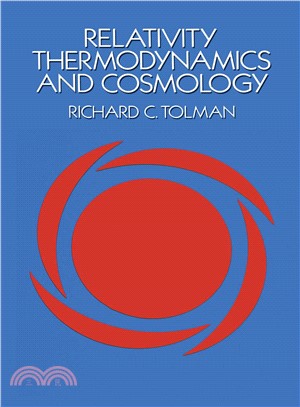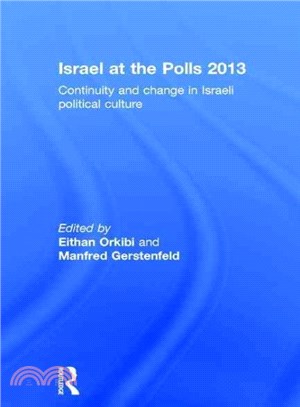MODERN THERMODYNAMICS(簡體書)
商品資訊
ISBN13:9787030255655
出版社:科學出版社
作者:Ji-Tao WANG
出版日:2009/09/01
裝訂/頁數:精裝/278頁
規格:26cm*19cm (高/寬)
版次:1
商品簡介
目次
商品簡介
This book can be used as a textbook in universities and colleges for the modernization of the thermodynamics discipline. There are not too much mathematical deductions in this book, so it is also suitable for readers to read and learn by themselves.
Based on the authors experiences, the modernization of the thermodynamics discipline is not easy, so the book is written in three levels. The first level is about 800 words in Preface; the second level is an outline of about 8 000 words in Chapter 1, which was originally a reply in 2006 to a reviewer, a person described in his own words as being through my personal journey through the realm of equilibrium thermodynamics and nonequilibrium thermodynamics and through my own work therein over decades; and the third level is the detailed discussions in other parts of the whole book.
Based on the authors experiences, the modernization of the thermodynamics discipline is not easy, so the book is written in three levels. The first level is about 800 words in Preface; the second level is an outline of about 8 000 words in Chapter 1, which was originally a reply in 2006 to a reviewer, a person described in his own words as being through my personal journey through the realm of equilibrium thermodynamics and nonequilibrium thermodynamics and through my own work therein over decades; and the third level is the detailed discussions in other parts of the whole book.
目次
1 An Outline of Modern Thermodynamics
1.1 Challenges to the Second Law of Thermodynamics Coming from Two Sides
1.2 Root of Puzzlement: Carnot Theorem
1.3 Uncertainty or Incompleteness of Clausius Inequality
1.4 Classification of Thermodynamics in the Current 21 st Century
1.5 A Typical Case of Nondissipative Thermodynamics: Nonequilibrium Phase Diagrams
1.6 A Typical Case of Dissipative Thermodynamics: Spiral Reactions
1.7 Out-of-Thermodynamics for Reciprocal Relations
1.8 Out-of-Thermodynamics Model for Dissipative Structures
1.9 Dissipation Decrease Theorem
1.10 Some Fundamental Concepts and Definitions
1.11 Conclusion of this Outline
References
2 Brief Histories of Thermodynamics
2.1 Ancient Knowledge on Heat
2.2 Carnot Theorem
2.3 The Nature of Heat
2.4 The First Law of Thermodynamics
2.5 Absolute Scale of Temperature
2.6 The Second Law of Thermodynamics
2.7 Entropy and Entropy Increase Principle
2.8 Macroscopic Rules for Collective Motion of a Large Amount of Particles
2.9 Development and Limitation of Classical Thermodynamics
2.10 Exploration of Modern Thermodynamics in the 20 th Century
References
3 Fundamentals of Classical Thermodynamics
3.1 Some Fundamental Concepts in Classical Thermodynamics
3.1.1 System and Surroundings
3.1.2 Equilibrium State and Nonequilibrium State
3.1.3 State Variables and State Functions
3.1.4 Reversible, Irreversible and Quasistatic Processes
3.1.5 Spontaneous and Nonspontaneous Processes
3.2 Mathematical Expressions of Basic Laws of Thermodynamics
3.2.1 Expression of the First Law of Thermodynamics
3.2.2 Expression of the Second Law of Thermodynamics
3.3 Classical Equilibrium Thermodynamics
3.4 Classical Nonequilibrium Thermodynamics
3.5 Criterion of Equilibrium
3.6 Calculation of Entropy Changes
3.7 Relationship between Gibbs Free Energy and T or p
3.8 Relationship between Chemical Potential and T or p
3.9 Gibbs Free Energy Changes of Chemical Reactions
References
4 Fundamentals of Modern Thermodynamics
4.1 Introduction
4.2 General Mathematical Expressions of Basic Laws
4.3 Local Equilibrium Approximation
4.4 Calculations of Entropy Productions
4.4.1 For Heat Conduction
4.4.2 For Heat Conduction together with Matter Transport
4.4.3 General Expressions for Entropy Production Calculations
4.5 Thermodynamic Coupling of Modem Thermodynamics
4.6 Schrrdingers Negative Entropy Conjecture
4.7 Chemiosmotic Coupling Theory for ATP Biosynthesis
4.8 Classical and Traditional Classifications of Thermodynamics
4.8.1 Classical Classifications of Thermodynamics
4.8.2 Traditional Classifications of Thermodynamics
4.9 Modem Classification of Thermodynamics
4.10 Extended Camot Theorem
4.11 Dissipation (or Entropy Production) Decrease Theorem
References
5 Dissipative Thermodynamics
5.1 Dissipative Thermodynamics
5.2 Linear Dissipative Thermodynamics and Onsager Reciprocal Relations
5.3 Cyclical Reactions
5.4 Entropy Production Minimization Principle
5.5 Approximation of Onsager Reciprocal Relations
5.6 Nonlinear Dissipative Thermodynamics and Prigogine Dissipative Structures
5.7 Bemard Pattern
5.8 Laser Emission
5.9 Chemical Oscillation and Brusselator
5.10 Turing Structures and Propagating Waves
5.11 Prigogines Carelessness on Thermodynamic Coupling
5.12 Thermodynamic Coupling Model of Spiral Reactions
References
6 Thermodynamics Coupling Model for Activated Low-Pressure Diamond Growth
6.1 High-Pressure Diamond Syntheses
6.2 Activated Low-Pressure Diamond Growth from the Vapor Phase
6.3 Preferential Etching Kinetic Model of SAH
6.4 Some Thermodynamic Models of the 1980s
6.4.1 Quasiequilibrium Model
6.4.2 Surface Reaction Thermodynamics Model
6.4.3 Defect-Induced Stabilization Model
6.5 Thermodynamic Coupling Model
6.6 Mechanism of Thermodynamic Coupling in Low-Pressure Diamond Growth
6.7 Other Thermodynamic Models in 1990s for Low-Pressure Diamond Growth
6.7.1 Unified Barrier Model
6.7.2 Charged Cluster Model
6.7.3 Under-Saturated Crystal Growth Model
6.8 Nanothermodynamics Model in 2005
References
7 Nondissipative Thermodynamics and Binary Nonequilibrium Phase Diagrams
7.1 An ABC in Mathematics
7.2 The Nature of CALPHAD
7.3 Nondissipative Thermodynamics and Nonequilibrium Phase Diagrams
7.4 Thermodynamic Data of Activated Graphite
7.4.1 Gibbs Free Energy Method
7.4.2 Equilibrium Constant Method
7.5 Calculation Principle of Nonequilibrium Phase Diagrams
7.6 Calculation Method of Nonequilibrium Phase Diagrams
7.6.1 Detailed Calculation Steps
7.6.2 Different Kinds of Phase Lines
7.7 T - X Nonequilibrium Phase Diagrams for C-H System
7.8 T - p - X Nonequilibrium Phase Diagrams for C-H and C-O Systems
7.9 T - X Nonequilibrium Phase Diagrams for C-(H+O) Systems
7.10 Gas Composition Nonequilibrium Phase Diagrams for C-H Systems
7.11 Influences of Gas Composition on Orientation of Crystal Growth
References
8 Nondissipative Thermodynamics and Ternary Nonequilibrium Phase Diagrams
8.1 Bachmanns Empirical Phase Diagram
8.2 Projective Nonequilibrium Phase Diagrams for C-H-O Systems
8.3 Influences of T and p on Projective Phase Diagrams for C-H-O Systems
8.4 Marinellis Critical Experimental Phase Diagram
8.5 Cross-Section Nonequilibrium Phase Diagrams for C-H-O Systems
8.6 Nonequilibrium Phase Diagrams for C-H-X Systems
8.7 Nonequilibrium Phase Diagrams for Low-Pressure cBN Syntheses
8.8 Evaluations and Brief Summary on Nonequilibrium Phase Diagrams
References
9 Carat-Size Low-Pressure Diamonds and Other Thermodynamic Issues
9.1 Carat-Size Gem-Quality Low-Pressure Diamond Growth
9.2 Fluctuation of Equilibrium States and Stationary Nonequilibrium States
9.3 Some Discussions on Classification of Thermodynamics
9.4 What is Thermodynamics and What is the Second Law of Thermodynamics
9.5 Thermodynamic Weakness of Physicists--Complex Systems
9.6 About Nonequilibrium Thermodynamics of Small Systems
9.7 Conclusion of this Book
References
Index
1.1 Challenges to the Second Law of Thermodynamics Coming from Two Sides
1.2 Root of Puzzlement: Carnot Theorem
1.3 Uncertainty or Incompleteness of Clausius Inequality
1.4 Classification of Thermodynamics in the Current 21 st Century
1.5 A Typical Case of Nondissipative Thermodynamics: Nonequilibrium Phase Diagrams
1.6 A Typical Case of Dissipative Thermodynamics: Spiral Reactions
1.7 Out-of-Thermodynamics for Reciprocal Relations
1.8 Out-of-Thermodynamics Model for Dissipative Structures
1.9 Dissipation Decrease Theorem
1.10 Some Fundamental Concepts and Definitions
1.11 Conclusion of this Outline
References
2 Brief Histories of Thermodynamics
2.1 Ancient Knowledge on Heat
2.2 Carnot Theorem
2.3 The Nature of Heat
2.4 The First Law of Thermodynamics
2.5 Absolute Scale of Temperature
2.6 The Second Law of Thermodynamics
2.7 Entropy and Entropy Increase Principle
2.8 Macroscopic Rules for Collective Motion of a Large Amount of Particles
2.9 Development and Limitation of Classical Thermodynamics
2.10 Exploration of Modern Thermodynamics in the 20 th Century
References
3 Fundamentals of Classical Thermodynamics
3.1 Some Fundamental Concepts in Classical Thermodynamics
3.1.1 System and Surroundings
3.1.2 Equilibrium State and Nonequilibrium State
3.1.3 State Variables and State Functions
3.1.4 Reversible, Irreversible and Quasistatic Processes
3.1.5 Spontaneous and Nonspontaneous Processes
3.2 Mathematical Expressions of Basic Laws of Thermodynamics
3.2.1 Expression of the First Law of Thermodynamics
3.2.2 Expression of the Second Law of Thermodynamics
3.3 Classical Equilibrium Thermodynamics
3.4 Classical Nonequilibrium Thermodynamics
3.5 Criterion of Equilibrium
3.6 Calculation of Entropy Changes
3.7 Relationship between Gibbs Free Energy and T or p
3.8 Relationship between Chemical Potential and T or p
3.9 Gibbs Free Energy Changes of Chemical Reactions
References
4 Fundamentals of Modern Thermodynamics
4.1 Introduction
4.2 General Mathematical Expressions of Basic Laws
4.3 Local Equilibrium Approximation
4.4 Calculations of Entropy Productions
4.4.1 For Heat Conduction
4.4.2 For Heat Conduction together with Matter Transport
4.4.3 General Expressions for Entropy Production Calculations
4.5 Thermodynamic Coupling of Modem Thermodynamics
4.6 Schrrdingers Negative Entropy Conjecture
4.7 Chemiosmotic Coupling Theory for ATP Biosynthesis
4.8 Classical and Traditional Classifications of Thermodynamics
4.8.1 Classical Classifications of Thermodynamics
4.8.2 Traditional Classifications of Thermodynamics
4.9 Modem Classification of Thermodynamics
4.10 Extended Camot Theorem
4.11 Dissipation (or Entropy Production) Decrease Theorem
References
5 Dissipative Thermodynamics
5.1 Dissipative Thermodynamics
5.2 Linear Dissipative Thermodynamics and Onsager Reciprocal Relations
5.3 Cyclical Reactions
5.4 Entropy Production Minimization Principle
5.5 Approximation of Onsager Reciprocal Relations
5.6 Nonlinear Dissipative Thermodynamics and Prigogine Dissipative Structures
5.7 Bemard Pattern
5.8 Laser Emission
5.9 Chemical Oscillation and Brusselator
5.10 Turing Structures and Propagating Waves
5.11 Prigogines Carelessness on Thermodynamic Coupling
5.12 Thermodynamic Coupling Model of Spiral Reactions
References
6 Thermodynamics Coupling Model for Activated Low-Pressure Diamond Growth
6.1 High-Pressure Diamond Syntheses
6.2 Activated Low-Pressure Diamond Growth from the Vapor Phase
6.3 Preferential Etching Kinetic Model of SAH
6.4 Some Thermodynamic Models of the 1980s
6.4.1 Quasiequilibrium Model
6.4.2 Surface Reaction Thermodynamics Model
6.4.3 Defect-Induced Stabilization Model
6.5 Thermodynamic Coupling Model
6.6 Mechanism of Thermodynamic Coupling in Low-Pressure Diamond Growth
6.7 Other Thermodynamic Models in 1990s for Low-Pressure Diamond Growth
6.7.1 Unified Barrier Model
6.7.2 Charged Cluster Model
6.7.3 Under-Saturated Crystal Growth Model
6.8 Nanothermodynamics Model in 2005
References
7 Nondissipative Thermodynamics and Binary Nonequilibrium Phase Diagrams
7.1 An ABC in Mathematics
7.2 The Nature of CALPHAD
7.3 Nondissipative Thermodynamics and Nonequilibrium Phase Diagrams
7.4 Thermodynamic Data of Activated Graphite
7.4.1 Gibbs Free Energy Method
7.4.2 Equilibrium Constant Method
7.5 Calculation Principle of Nonequilibrium Phase Diagrams
7.6 Calculation Method of Nonequilibrium Phase Diagrams
7.6.1 Detailed Calculation Steps
7.6.2 Different Kinds of Phase Lines
7.7 T - X Nonequilibrium Phase Diagrams for C-H System
7.8 T - p - X Nonequilibrium Phase Diagrams for C-H and C-O Systems
7.9 T - X Nonequilibrium Phase Diagrams for C-(H+O) Systems
7.10 Gas Composition Nonequilibrium Phase Diagrams for C-H Systems
7.11 Influences of Gas Composition on Orientation of Crystal Growth
References
8 Nondissipative Thermodynamics and Ternary Nonequilibrium Phase Diagrams
8.1 Bachmanns Empirical Phase Diagram
8.2 Projective Nonequilibrium Phase Diagrams for C-H-O Systems
8.3 Influences of T and p on Projective Phase Diagrams for C-H-O Systems
8.4 Marinellis Critical Experimental Phase Diagram
8.5 Cross-Section Nonequilibrium Phase Diagrams for C-H-O Systems
8.6 Nonequilibrium Phase Diagrams for C-H-X Systems
8.7 Nonequilibrium Phase Diagrams for Low-Pressure cBN Syntheses
8.8 Evaluations and Brief Summary on Nonequilibrium Phase Diagrams
References
9 Carat-Size Low-Pressure Diamonds and Other Thermodynamic Issues
9.1 Carat-Size Gem-Quality Low-Pressure Diamond Growth
9.2 Fluctuation of Equilibrium States and Stationary Nonequilibrium States
9.3 Some Discussions on Classification of Thermodynamics
9.4 What is Thermodynamics and What is the Second Law of Thermodynamics
9.5 Thermodynamic Weakness of Physicists--Complex Systems
9.6 About Nonequilibrium Thermodynamics of Small Systems
9.7 Conclusion of this Book
References
Index
主題書展
更多
主題書展
更多書展今日66折
您曾經瀏覽過的商品
購物須知
大陸出版品因裝訂品質及貨運條件與台灣出版品落差甚大,除封面破損、內頁脫落等較嚴重的狀態,其餘商品將正常出貨。
特別提醒:部分書籍附贈之內容(如音頻mp3或影片dvd等)已無實體光碟提供,需以QR CODE 連結至當地網站註冊“並通過驗證程序”,方可下載使用。
無現貨庫存之簡體書,將向海外調貨:
海外有庫存之書籍,等候約45個工作天;
海外無庫存之書籍,平均作業時間約60個工作天,然不保證確定可調到貨,尚請見諒。
為了保護您的權益,「三民網路書店」提供會員七日商品鑑賞期(收到商品為起始日)。
若要辦理退貨,請在商品鑑賞期內寄回,且商品必須是全新狀態與完整包裝(商品、附件、發票、隨貨贈品等)否則恕不接受退貨。

